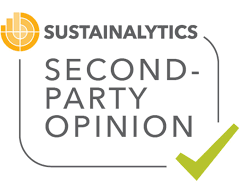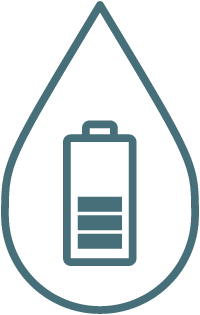
At Synthesis Analytics, we have developed our own set of green principles. Team members are all committed to our dedication to shape and greenify the global computing and heating landscape.


Sustainalytics – www.sustainalytics.com – is a company that rates the sustainability of listed companies based on their environmental, social and corporate governance performance. The Green Bond Principles have been set by ICMA (International Capital Markets Association). Synthesis Analytics were awarded their Second Party Opinion from Sustainalytics on the 13.05.20.

Enter your email address below to download the Sustainalytics Report.

Power Usage Effectiveness (PUE) and Data Centre Infrastructure Efficency (DCiE) are some of the key metrics that we monitor at Synthesis Analytics to make sure we are staying green and friendly to the planet. PUE is a ratio that describes how efficiently a data center uses energy; specifically, how much energy is used by the computing equipment in relation to cooling and other overhead costs. PUE is the ratio of the total amount of energy used by a data center facility compared to the energy delivered to computing equipment. Hence, PUE is the inverse DCIE. PUE and its reciprocal DCiE are widely accepted benchmarking standards proposed by the Green Grid to help IT Professionals determine how energy efficient data centers are, and to monitor the impact of their efficiency efforts. The goal is to have a PUE as close to 1.0 and a DCiE as close to 100% as possible. A PUE below 1.5 can be considered to be an efficient data center and at that level, for every two units of energy expended to operate the computing equipment, one extra is used for cooling and infrastructure. At Synthesis Analytics thanks to our continually ongoing efforts in our chase for increasingly more efficient operations we have achieved a PUE of 1.02 and a DCiE of 98% - less than 2% used for infrastructure and supporting operations. These levels are not possible to achieve with conventional technologies such as air cooling and traditional power conversion.

We have only seen the beginning of THE global exponential growth in high performance computing capacity delivered close to where it is needed - at the Edge. Streaming video services such as Netflix and YouTube are just the starting point. New cloud gaming services such as Google Stadia and other services enabled by the introduction of the 5G communication networks will escalate the need for enhanced infrastructure. We will soon experience the introduction of autonomous vehicles on the roads and in the sky, the deployment of AI-enabled image analysis in healthcare, full-scale systems for transaction analysis reforming the financial sector and much more.
With these new resources we have the chance to improve quality of life across the globe. However, these resources consume large volumes of energy and it is imperative that the deployed energy can be fully captured and reused.
Synthesis Analytics is committed to the development of Smart Cities by pushing global standards for PUE and DCiE levels. With our EDGE1 and EDGE2 solutions we want to lead the way into the future by shaping global expectations - deployed energy can be fully captured and reused.

Synthesis Analytics have many green advantages assisting in the constant battle with reducing carbon emissions and the carbon footprint.

Information and Communications Technology (ICT) is posed to be responsible for 3.5% of the global emissions by the end of and expected to escalate to 14% by end of 2040. Effective computing as well as capturing and reusing deployed energy will be paramount. But the actual source of energy is also crucial. Synthesis Analytics only sources renewable energy, mainly hydro power but also solar and wind. And we are engaged in several R&D projects exploring next generation renewable energy solutions.
At Synthesis Analytics we have formed a connected whole, from various components to bring the systematic computational analysis of data and other information, via a high performance computing solution in a modern and sustainable approach.
LEARN MORE